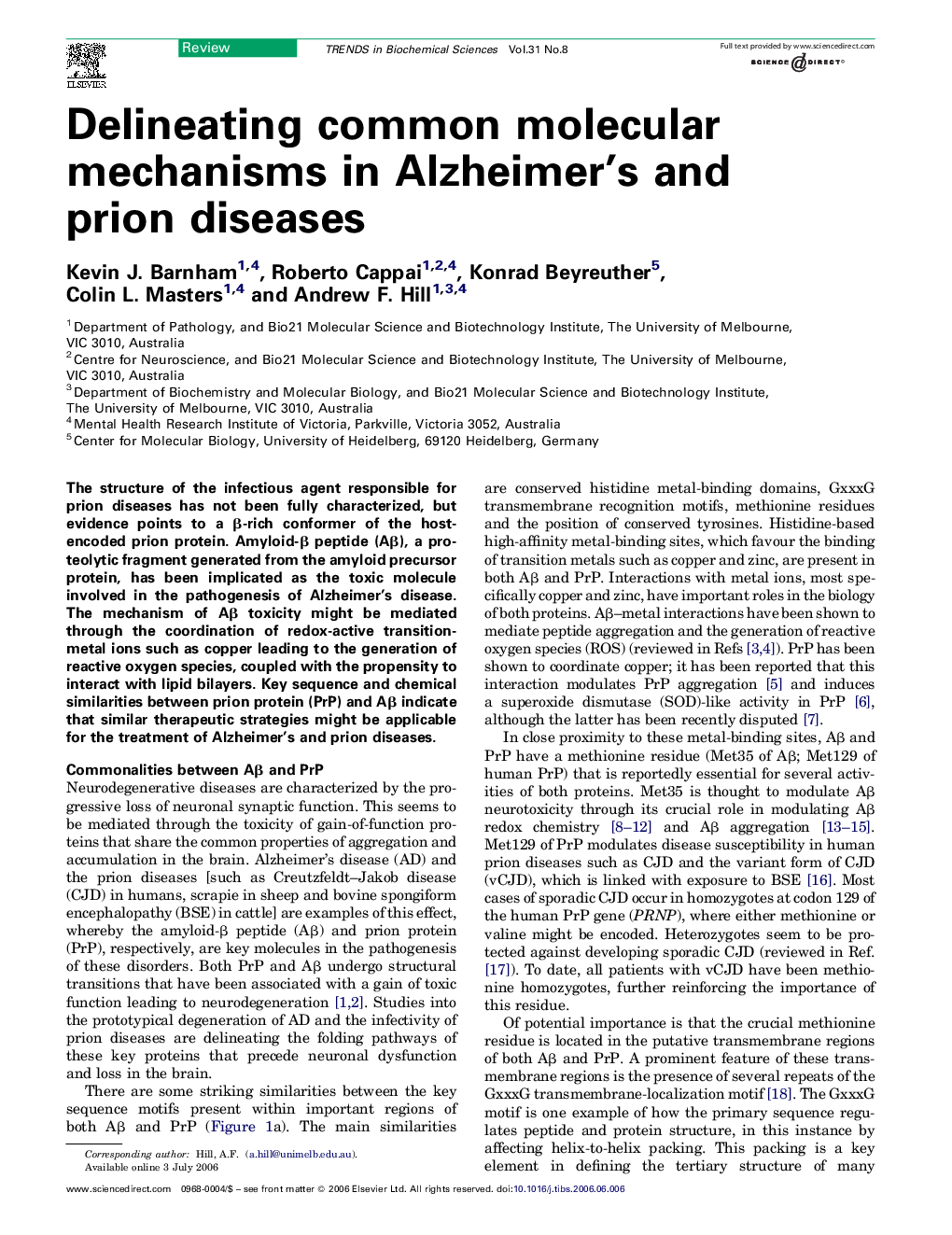| Article ID | Journal | Published Year | Pages | File Type |
|---|---|---|---|---|
| 2031516 | Trends in Biochemical Sciences | 2006 | 8 Pages |
The structure of the infectious agent responsible for prion diseases has not been fully characterized, but evidence points to a β-rich conformer of the host-encoded prion protein. Amyloid-β peptide (Aβ), a proteolytic fragment generated from the amyloid precursor protein, has been implicated as the toxic molecule involved in the pathogenesis of Alzheimer's disease. The mechanism of Aβ toxicity might be mediated through the coordination of redox-active transition-metal ions such as copper leading to the generation of reactive oxygen species, coupled with the propensity to interact with lipid bilayers. Key sequence and chemical similarities between prion protein (PrP) and Aβ indicate that similar therapeutic strategies might be applicable for the treatment of Alzheimer's and prion diseases.
